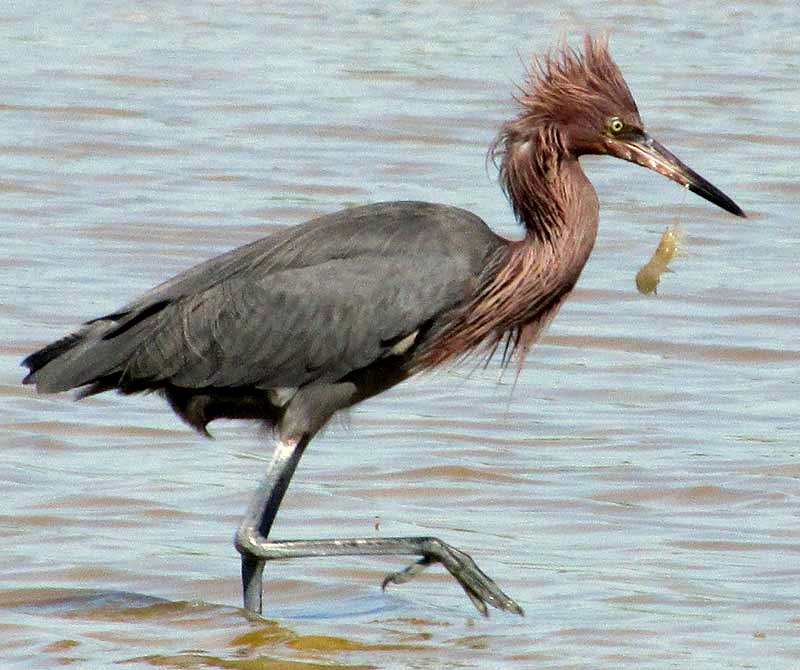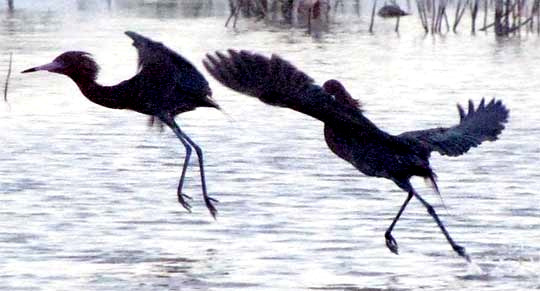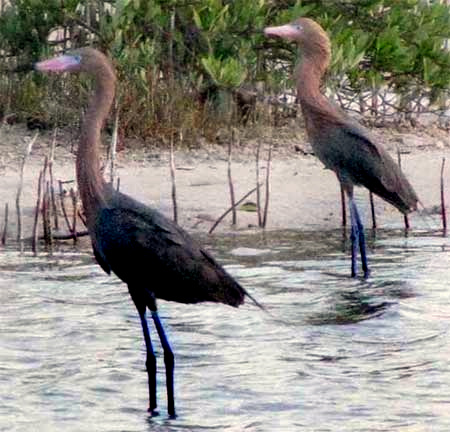Excerpts from Jim Conrad's
Naturalist Newsletter

from the November 16, 2014 Newsletter issued from Río Lagartos, on the Yucatan Peninsula's northern coast (~N21.60°, ~W88.16°), Yucatán state, MÉXICO
REDDISH EGRET WITH A SHRIMP
Above you see a Reddish Egret dangling a wild shrimp by its antenna. The egret is stepping lively because nearby gulls and herons tended to mob any bird who caught a meal and didn't immediately swallow it or show signs of defending the meal with vigor.
from the January 19, 2009 Newsletter issued from near Telchac Pueblo on the Yucatan Peninsula's northern coast (~N21.60°, ~W88.16°), Yucatán state, MÉXICO
GRACEFULLY BELLIGERANT REDDISH EGRETS
I arrived at the lagoon late in the day, my feet blistered from having hiked several miles from the nearest bus stop. Light was failing as I pegged my tent next to the water's edge and I heard what sounded like two dry sticks being hit together. It was two herons doing combat about 50 meters away, shown below:

And then a certain threshold was passed and the birds lighted together at the water's edge. They seemed to pose for the picture I snapped, which you can see below:

In that picture the vertical "sticks" behind the birds are air-absorbing pneumatophores of nearby, root- submerged Black Mangroves, Avicennia nitida. In the growing darkness I had to overexpose the picture to bring out the birds' reddish heads and neck feathers, which distinguish them from Little Blue Herons.
Reddish Egrets, Egretta rufescens, occur on the US Gulf Coast, mainly southern Florida and Texas, and extend as far south as Venezuela.